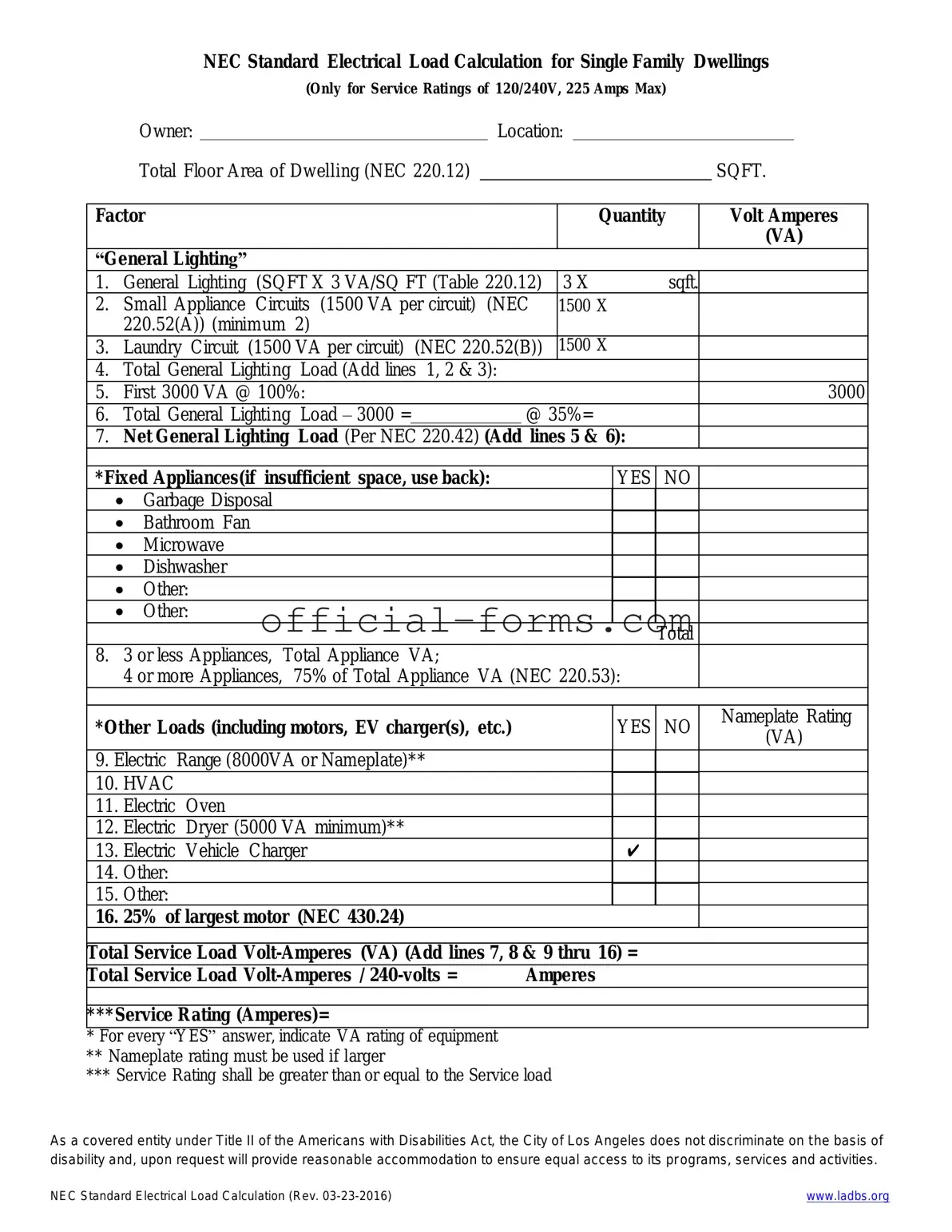The LADBS NEC Standard Electrical Load Calculation form plays a crucial role in ensuring that electrical systems in buildings are safe, efficient, and compliant with local codes. This form serves as a comprehensive tool for calculating the expected electrical load of a property, taking into account various factors such as the size of the building, the type of occupancy, and the specific electrical appliances and systems that will be used. By accurately assessing these loads, property owners and contractors can make informed decisions about the electrical infrastructure needed to support their projects. The form guides users through a series of calculations and considerations, ensuring that all relevant data is collected and analyzed. Additionally, it helps streamline the permitting process by providing necessary documentation to the Los Angeles Department of Building and Safety (LADBS). Whether you are a homeowner planning a renovation or a contractor working on a new construction project, understanding how to properly complete this form is essential for maintaining safety and compliance in your electrical installations.
